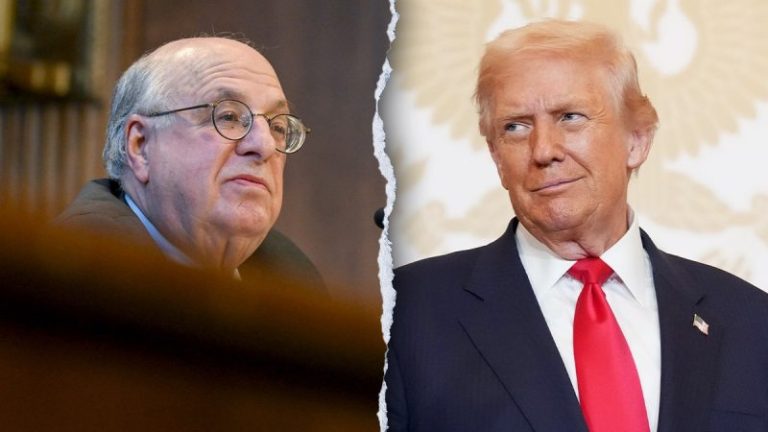Americans have delivered the same message in the last two elections: make life affordable again.
They are tired of working harder for less, while the cost of everything — from housing to education to insurance — keeps rising. The affordability crisis touches every household, and its biggest driver is the one Washington refuses to tackle seriously: healthcare.
Healthcare now consumes nearly one-fifth of our economy. It is the largest single cost for employers, the fastest-growing burden on families, and the quietest drain on national growth. Every dollar businesses spend on bloated health costs is a dollar not available for higher wages, new jobs or investment. Every dollar families spend on premiums or out-of-pocket costs is a dollar they can’t use for savings, housing or opportunity. Until we fix healthcare, we can’t fix affordability.
It’s not that Washington ignores healthcare — it’s that it thinks about it too narrowly. Politicians obsess over temporary subsidies, tax credits and program expansions that make insurance more expensive to subsidize but never make care itself more affordable. The current fight over extending COVID-era insurance subsidies is a perfect example. Even supporters of Obamacare now admit that the ‘Affordable’ Care Act turned out to be unaffordable. Their answer is to borrow more money to prop up a system that keeps getting worse. That is not reform — it’s surrender.
There are three truths both parties must face.
First, the system is already too expensive and locked in a pattern that guarantees it will grow more unaffordable every year.
Second, 60 years of bureaucratic control — public and private — have utterly failed to contain costs.
Third, we must build a new model that relies on patients, doctors and employers — not massive government and insurance-company bureaucracies — to achieve the change Americans want.
That model is not theoretical — it already works in the rest of our economy. When people have access to clear prices and quality information before making decisions, competition drives innovation, choice and lower costs. Technology has made this possible in every industry, from travel to retail to manufacturing. If the same principles applied to healthcare, we could unleash that same power to lower costs and improve quality.
Instead, our opaque, bureaucratic system hides prices and multiplies middlemen. The average family of four now spends roughly $27,000 a year on health insurance — about the cost of a new Chevrolet or Toyota every 12 months. Most families don’t see the full bill because their employer or the government pays much of it, but that just means their wages are smaller. Paying the equivalent of a new car every year just for coverage is why Americans list affordability as their top economic concern.
Worse, nobody knows what anything costs — not patients, not families, not even the self-funded employers who pay the claims for their plan members. Bills arrive months after care, after passing through a maze of third-party administrators, repricers and billing vendors. That secrecy fuels waste, fraud and frustration. It’s estimated that 30% to 50% of all healthcare spending is administrative rather than medical. In short, America’s healthcare system has more middlemen than medicine.
And who benefits? Powerful interest groups, insurers, consultants and bureaucracies that profit from complexity and confusion. As Tom Cruise shouted in ‘Jerry Maguire’: ‘Show me the money.’ Behind the speeches and lobbyists defending this broken system are people determined to protect their share of a bankrupting status quo.
Second, 60 years of bureaucratic control — public and private — have utterly failed to contain costs.
Politicians can’t fight every entrenched interest group — but millions of patients and doctors armed with real price and quality information can. Transparency gives power back to those who actually deliver and receive care. When they can see what things cost, they can make smarter choices, reward efficiency and hold wasteful players accountable. Transparency doesn’t just lower prices — it changes who holds the power.
That’s why President Donald Trump’s price-transparency executive order in his first administration was a genuine breakthrough. It required hospitals and insurers to publish negotiated prices and, through the No Surprises Act, directed officials to create Advance Explanations of Benefits (AEOBs) so Americans could know their costs before receiving care. Trump started the transparency revolution. Under the Biden administration, enforcement stalled, and patients never saw the full benefit.
Now Trump has the chance to finish what he began — and make transparency permanent.
The administration has the authority to act right now under his ‘radical transparency’ executive order issued earlier this year, the No Surprises Act, and existing Employee Retirement Income Security Act authority. The Centers for Medicare & Medicaid Services should immediately issue and enforce AEOB rules. The Department of Labor should guarantee employers access to complete claims and pricing data while protecting patient privacy. If the administration moves quickly, Americans could begin receiving AEOBs in 2026 — and Trump could rightfully claim a historic victory for transparency, competition and higher wages before the midterms.
Congress should reinforce this effort by passing the bipartisan Patients Deserve Price Tags Act, led by Kansas Republican Sen. Roger Marshall and Colorado Democrat Sen. John Hickenlooper. The bill secures employer access to data and ensures no third-party administrator can hide prices from the people who pay the bills. The executive branch can act today; Congress should make it permanent.
When every patient and employer can see prices, markets will clean out waste on their own. Transparency gives employers the power to negotiate directly with providers and patients the ability to choose wisely. Prices in the open create competition that middlemen can’t survive and costs they can’t hide. The ripple effect — lower costs, higher wages, more investment — will strengthen every part of the economy.
If America truly wants to make life affordable again, healthcare transparency is where we start.
It’s bold. It’s achievable. And it’s the single biggest step we can take to restore prosperity for working families.
Disclaimer: Gingrich 360 has consulting clients in the healthcare industry which may be impacted by changes to healthcare laws.










